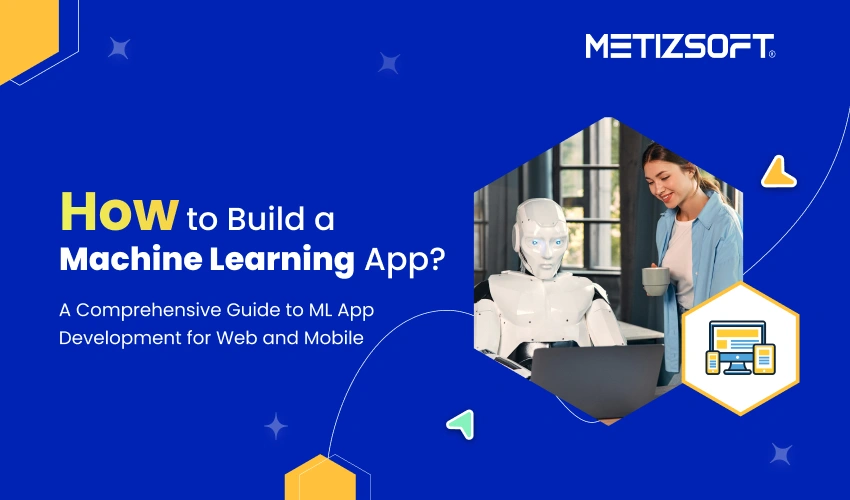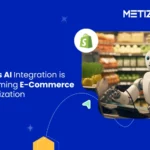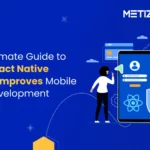
Table of Contents
Introduction
Did you know that the global machine learning (ML) market is expected to grow incredibly fast, reaching more than $209 billion by 2029? This significant growth shows how businesses are using ML to build smarter, more efficient web and mobile apps. ML-based apps are transforming industries by offering personalized experiences, automating repetitive tasks, and providing actionable insights from data. Whether it’s a mobile app suggesting your next favorite product or a web app spotting fraud, ML is changing how apps work.
In this detailed guide, we’ll look at the step-by-step process of machine learning app development for web and mobile, its key benefits, and the appropriate tools to consider for the process. If you want to prepare your business for the future with advanced app solutions, this guide is your valuable resource.
What is Machine Learning?
Machine learning, or ML, is a form of artificial intelligence that lets computers learn from exclusive and large sets of data and make decisions or predictions without needing to be programmed for each specific task. Unlike regular software, which follows fixed rules, machine learning software needs large amounts of data to train and test. It also requires preparing and managing the data, more computing power, and experts who know about data science and machine learning.
When creating machine learning apps for mobile devices, developers have to consider the limits of these devices, like less powerful processors, limited memory, and shorter battery life. They also need to think about the need for internet access and how users interact with the app, such as using gestures or sensors like GPS, accelerometers, and cameras.
Step by Step Guide to Develop a Machine Learning App
The machine learning app development process involves basic steps that generally resemble the following:
Identify the Issue
Finding or identifying the issues is a common first step in every mobile or custom enterprise app development process. In the ML app segment, it became crucial as it involves many key functions such as image processing, text mining, and contact suggestions. This clarifies your vision of using relevant algorithms and data for the mobile app. Once you get a clearer picture of the problem, you will comprehensively match user expectations.
Collect and Prepare Data
Data is an essential part of any machine learning algorithm. This is because we rely on data to detect and identify relevant patterns in order to function as intended. You can gather relevant information from the internal database, public dataset, or through surveys. Once collected, you must clean the data and pre-process it to ensure it is homogeneous and free from errors that could mislead the ML model during training.
Choose the Right ML Model
Choosing the right machine learning model is important for the success of your project because some problems require specific techniques, such as classifying decision trees or neural networks for image recognition. It’s important to thoughtfully consider the complexity of the model alongside the resources available. This approach will help us develop a more effective and feasible solution.
It is best to use basic prototypes in sequence to see how the complexity works. It is important to understand that models are not perfect and require some operational flexibility.
Develop the ML Model
You have two primary options to build the ML model for app development:
- Pre-trained Ml Models: Pre-trained models, also known as general-purpose models, are already trained on large amounts of data and can be used for various tasks, like recognizing images or analyzing text. Your machine learning team will just need to adjust these models slightly to make them work better for your specific needs.
- Custom ML Models: Custom models, on the other hand, are built for specific tasks in a particular field using special datasets. Usually, you’ll need to give your data science team the necessary data to create a custom model tailored to your requirements.
Train the ML Model
The next step after preparing the data and selecting the model is training. During training, the model considers its free parameters and returns to the appropriate solutions. This can take some time, especially when developing a large dataset or complex model. Quality training data minimizes overfitting and enhances a model’s ability to generalize to unseen data.
Build the User Interface (UI)
Once you have prepared your model, the next step is to add it to a simple and intuitive user interface. Keep the UI very simple so the user can use the app quickly. Make sure the app is web-based, mobile, or desktop. Try to maintain user experience (UX) to minimize interaction issues. The goal is to provide simple and flexible methods for machine learning applications.
Deploy the ML Model and Monitor the App
The final step is to launch the ML app (on a server or share it through app stores and other platforms) and make it available to everyone. Once it’s out, you need to keep an eye on it regularly to make sure it works well and does what it’s supposed to. Monitor often to see how well it’s doing and gather valuable feedback to make improvements.
Benefits of Machine Learning App Development
Personalized Customer Experience: Machine learning applications analyze user behavior and preferences in detail. This allows companies to provide personalized content, advice, and services. This not only increases customer satisfaction; but fosters long-term loyalty. This leads to a good user experience.
Efficient Decision Making: Applications powered by machine learning efficiently process and analyze large amounts of data and provide useful insights. This helps companies make smart decisions faster and improves how efficiently they work.
Improved Customer Support: Machine learning plays a key role in optimizing customer support by integrating chatbots and virtual assistants that are always available to answer general questions quickly. These tools greatly increase user engagement and satisfaction.
Competitive Advantage: ML algorithms efficiently identify unusual patterns and flag potential fraud in real-time. This significantly increases user confidence and reduces revenue loss.
List of Best Platforms for Mobile App Development with ML
TensorFlow Lite
TensorFlow Lite is an open-source platform made by Google that helps run machine learning (ML) models on iOS and Android devices. It offers an easy and lightweight solution for adding ML features to mobile apps of both operating systems.
The tool allows ML to work directly on the device, which means faster results and a smoother user experience. It conveniently handles various ML models and includes tools to make them work better; many mobile developers choose to use it.
Core ML
Core ML is Apple’s machine learning platform designed for iOS devices. It allows ML models to be integrated into iOS apps for on-device machine learning processing. It provides advanced AI functions with image recognition support, natural language processing, and sound analysis. Core ML recognizes multiple model types and is optimized for Apple Silicon, allowing for high speeds and minimal power consumption.
ML.NET
ML.NET is a Microsoft open-source machine learning framework that is cross-platform compatible and designed for .NET developers. It enables you to create new models based on ML algorithms using C# or F# language; it doesn’t have to be related to data science.
ML.NET in architecture covers most machine learning tasks, such as classification, regression, and recommendations. It also interfaces well with any .NET application.
Azure Machine Learning
Azure Machine Learning is Microsoft’s cloud service that offers a complete platform for creating, training, and launching machine learning models. It supports popular frameworks and languages like TensorFlow, PyTorch, and scikit-learn, and includes tools for managing and deploying models.
It’s a flexible and user-friendly cloud platform for Machine Learning that allows data scientists and developers to collaborate effectively.
How Can Metizsoft Help You Leverage ML in Your Next Mobile App Project?
Metizsoft is a leading machine learning development company with a dozen years of experience creating custom software, websites, and apps. We take on projects of all levels, starting from the very beginning, and offer complete services to businesses that want to excel in these domains.
We aim to provide flexible machine learning app development solutions that perfectly meet your business demand and budget.
As a trusted ML app development services provider, we make sure our engineers have all the tools and resources they need to produce top-quality work. When working as an outsourcing partner, we help our engineers join the client’s team smoothly to boost productivity quickly.
Contact us today to explore our AI and ML venture and how we harness these game-changing technologies to bring transformative solutions for all.
AboutChetan Sheladiya
Related Posts
Complete Guide of React Native Document Scanner Library (Only iPhone)
Let’s start from the beginning, if you are looking for a document scanner the same as the Doc Scanner application then you are...
What Importance Do Mobile Apps Play in The Success of Your Business?
As we know, mobile apps are dominating the market these days. Indeed, we’ve all downloaded several mobile apps on our...

